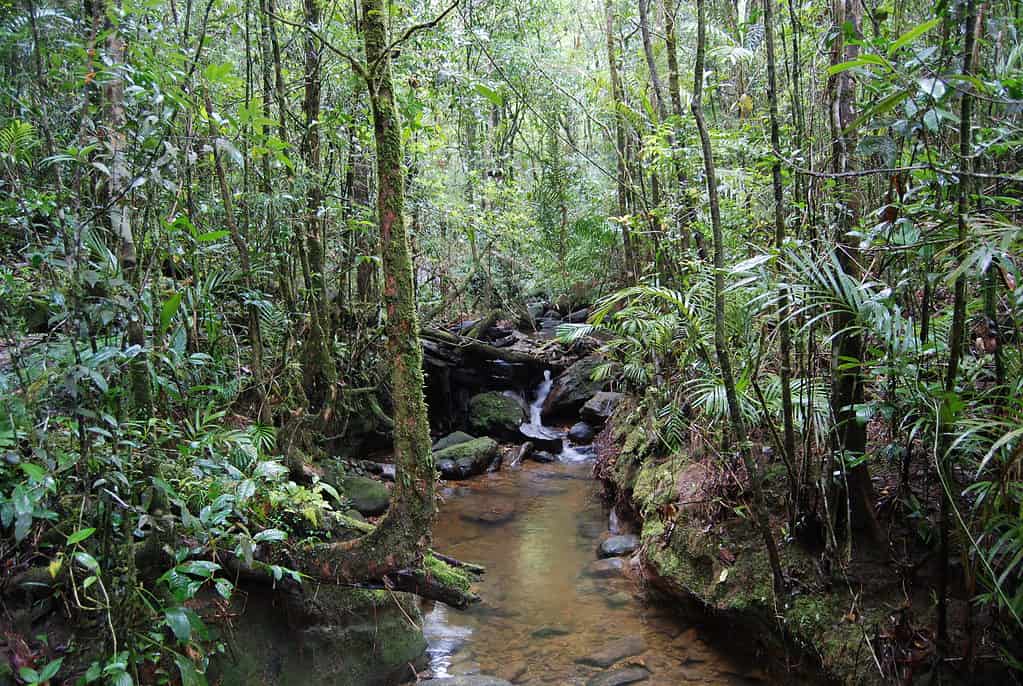Deforestation is a particular concern in tropical forests because they store much of the world’s biodiversity, and in addition, are also massive carbon sinks, drawing carbon from the atmosphere. If we cut down these forests, they obviously don’t absorb more carbon from the atmosphere — but it gets even worse. Previous studies suggested that once trees are removed forests are still capable of capturing carbon as the new trees grow quickly. However, a new study is suggesting otherwise.

Researchers from the Stability of Altered Forest Ecosystem (SAFE) Project estimated the carbon emissions and the uptake from forests in Borneo, Malaysia. The area has been severely affected in recent decades by deforestation (when a forest is fully cleared) and forest degradation (not fully cleared, but still impacted by logging).
Once trees are logged, the carbon uptake from re-grown trees is overshadowed by the emissions from soil organic matter and from deadwood, the study showed. While focused on one area, the researchers believe the implications are serious. The carbon being captured in tropical forests around the world could be lower than expected.
“Our results show that for the tropical forest we studied, logged areas are a source of carbon even a decade after logging has occurred. This means we need to reassess their role in global carbon budgets – we can no longer apply the blanket assumption that they are carbon sinks,” Maria Millis, study author and researcher, said in a statement.
Tropical forests and carbon capture
About 30% of global greenhouse gas emissions are absorbed or “captured” by the land, making it a “carbon sink.” Tropical forests have a particularly important role, having absorbed 15% of all emissions between 1990 and 2007, a study found. But their carbon-sink capabilities are fast declining, even in forests unaffected by logging.
Most studies of forests recovering from deforestation or degradation have focused on measuring three growth, estimating the amount of carbon captured. The new study added a new dimension, also measuring how much carbon was coming from the ground. This allowed estimating the overall carbon budget of the Malaysian forest.
The forest plots in the study had gone through logging at different stages over the past few decades. The researchers took measurements between 2011 and 2017, using a portable CO2 monitor to test patches of land and pieces of deadwood. They also set up a tower above the forest canopy to measure the flux of carbon in and out of the forest.
The researchers found that unlogged forests are generally carbon neutral, but that moderately and heavily logged forests are a carbon source. They estimated a carbon source of between 1.74 and 0.94 tons of carbon per hectare in moderately logged plots and between 5.23 and 1.2 in severely degraded plots, with emissions continuing for at least one decade.
“A lot of the carbon released in recovering forests is from collateral damage – trees that have died as a result of damage during logging, and from disturbed soil,” Terhi Ruitta, study co-author, said in a statement. “Logged forests still have value, so making sure they aren’t releasing extra carbon through better logging practices will boost their sustainability.”
Ultimately, avoiding a climate catastrophe will be virtually impossible if we don’t step up our game in terms of protecting forests and planting new ones. We have no technological way of taking carbon out of the atmosphere, so forests are the only way to reduce existing greenhouse gases in the short term. If we continue degrading and destroying forests, there can be little success on the climate front.
The study was published in the journal PNAS.









